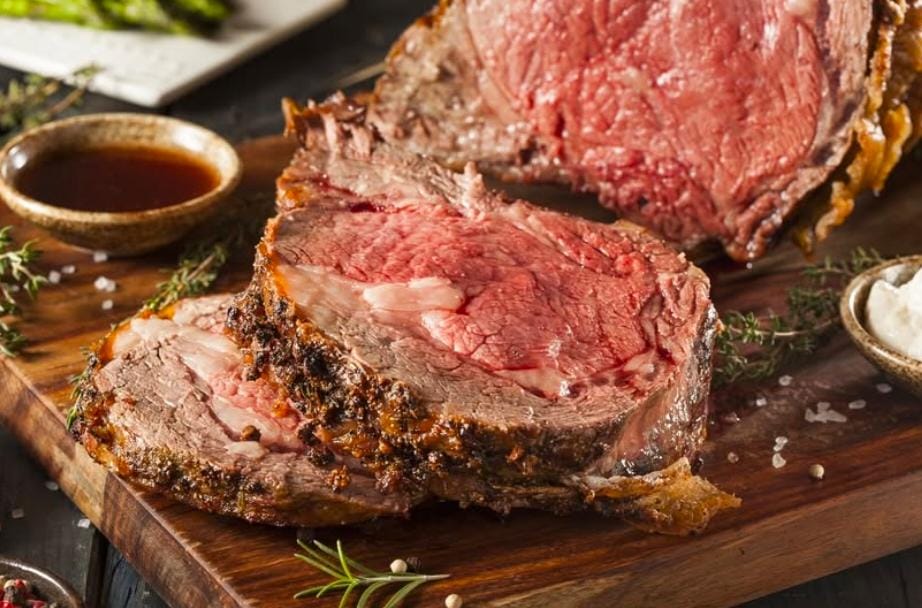Picking the perfect steak can be tricky. With so many cuts and grades to choose from, it’s easy to feel overwhelmed at the meat counter. But don’t worry – we’ve got you covered. This guide will walk you through everything you need to know about choosing the right steak for your next meal, whether you’re cooking at home or exploring Waterton restaurants that serve some of the best cuts in town.
Understanding Steak Cuts
The first step in choosing the right steak is knowing your cuts. Each part of the cow offers different flavours and textures. Let’s break down some popular options:
Ribeye
Ribeye steaks come from the rib section of the cow. They’re known for their rich marbling and beefy flavour. The fat content makes them juicy and tender when cooked properly.
Sirloin
Sirloin steaks are cut from the rear back portion of the cow. They offer a good balance of flavour and tenderness. Sirloin is often a more affordable option compared to some premium cuts.
Filet Mignon
Cut from the tenderloin, filet mignon is prized for its buttery texture. It’s the most tender cut, but can be milder in flavour. Filet mignon is often the priciest steak option.
New York Strip
Also known as strip steak, this cut comes from the short loin. It offers a nice balance of tenderness and flavour. New York strip is a popular choice for its versatility.
T-Bone and Porterhouse
These steaks feature both the strip and tenderloin, separated by a T-shaped bone. Porterhouse steaks have a larger portion of tenderloin. They’re great for those who want to enjoy two cuts in one steak.
Grading Systems
Beef is graded based on its quality. In the U.S., the main grades you’ll encounter are:
- Prime: The highest grade with abundant marbling. Only about 2% of beef qualifies as Prime.
- Choice: High quality, but with less marbling than Prime. Most supermarket beef is Choice grade.
- Select: Leaner than Choice, with less marbling. It can be less tender and flavorful.
Higher grades generally mean more flavour and tenderness, but they also come with a higher price tag.
Marbling Matters
Marbling refers to the white lines of fat within the muscle. More marbling usually means a more flavorful and tender steak. Look for steaks with even, fine lines of fat throughout the meat.
Thickness Considerations
The thickness of your steak affects how it cooks. Thicker steaks are easier to cook to your desired doneness without overcooking. Aim for steaks that are at least 1 inch thick, preferably 1.5 to 2 inches, for best results.
Color Cues
Fresh beef should be bright red. Avoid steaks that look brown or have dark spots. Some variance in colour is normal, but significant discolouration could indicate the meat is past its Prime.
Grass-Fed vs. Grain-Fed
Grass-fed beef comes from cattle that graze on grass their entire lives. It tends to be leaner and have a more distinct flavour. Grain-fed beef is often more marbled and has a milder taste.
Your choice between grass-fed and grain-fed comes down to personal preference and dietary considerations.
Dry-Aged Options
Dry-ageing is a process that enhances the flavour and tenderness of beef. During dry-ageing, moisture evaporates from the meat, concentrating its flavour. The process also allows enzymes to break down muscle fibres, increasing tenderness.
Dry-aged steaks are more expensive but offer a unique, intense beef flavour. They’re a treat for steak enthusiasts.
Budget Considerations
Steak prices can vary widely. Premium cuts like filet mignon and ribeye are often the most expensive. If you’re on a budget, consider cuts like sirloin or flank steak. These can be delicious when prepared correctly.
Cooking Method Matters
Different cuts of steak are suited to different cooking methods. Consider how you plan to cook your steak when choosing:
- Grilling: Ribeye, New York strip, and T-bone work well on the grill.
- Pan-searing: Filet mignon and sirloin are great for pan-searing.
- Broiling: Flank steak and skirt steak are good choices for broiling.
Portion Size
A general rule of thumb is to plan for about 6-8 ounces of steak per person. Adjust based on appetites and what sides you’re serving. Remember, it’s better to have a little extra than not enough.
Ask Your Butcher
Don’t be afraid to ask for help. Butchers are knowledgeable about their products and can offer recommendations based on your preferences and cooking plans. They can also cut steaks to your desired thickness.
Storage and Handling
Once you’ve chosen your steak, proper storage is crucial. Keep it refrigerated and use it within a few days for the best quality. Let the steak come to room temperature before cooking for more even results.
Conclusion
Choosing the right steak doesn’t have to be complicated. Consider the cut, grade, marbling, and your cooking method. Don’t forget to factor in your budget and personal taste preferences. With these tips in mind, you’ll be well on your way to selecting the perfect steak for your next meal—whether you’re firing up the grill at home or dining at one of the many Waterton Alberta restaurants known for serving delicious steaks. Happy grilling!






